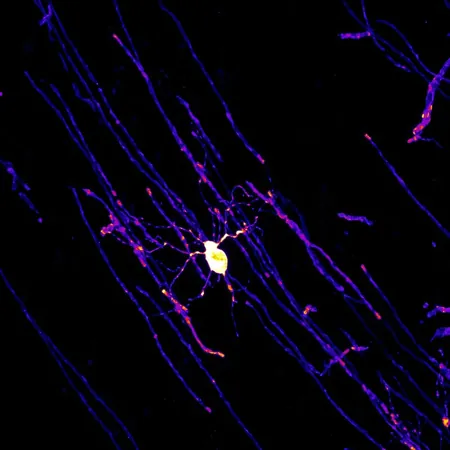
Unlocking the Past: Paleoclimate Insights on Future Global Warming
2025-09-15
Author: Wei Ling
A Glimpse into the Future of Our Planet
As carbon dioxide (CO2) levels continue to surge, the implications for our planet's temperature are clear: warmer days ahead. Yet, the journey to a new climate equilibrium is not immediate. It can stretch over decades, even millennia, as heat gets trapped in our oceans and the carbon cycle shifts.
Understanding the Climate Puzzle
Different climate models give us varying timelines on when this equilibrium will finally settle. A critical factor in these discrepancies is what's known as the "pattern effect." This phenomenon occurs when uneven changes in sea surface temperatures create unique warming patterns in the ocean. These patterns can disrupt atmospheric circulation, thereby affecting cloud formation, precipitation, and heat distribution across the globe.
Looking to the Past for Future Clarity
To gain insight into our warming prospects, researchers are turning to history. By analyzing paleoclimate data from epochs when our planet was warmer, scientists can glean valuable clues about future climate patterns. Recently, a study led by Zhang and colleagues examined an extensive 10 million years of sea surface temperature records.
A Deeper Dive into Ocean Data
Using the Western Pacific Warm Pool—our planet's largest and warmest body of surface water—as a benchmark, the research compared temperature records from this region with data from 17 other ocean sites. This extensive analysis aimed to establish a clearer global warming pattern.
Connecting Past Trends to Current Models
The researchers then cross-referenced these historical warming trends with predictions from a variety of models simulating a dramatic quadrupling of CO2 emissions. To their surprise, they discovered a fascinating alignment: both paleoclimate data and model results demonstrated similar long-term warming trends, especially in higher latitudes.
Modern Warming vs. Historical Patterns
However, the study revealed notable differences when juxtaposing these historical patterns with the past 160 years of sea surface temperature measurements. Today’s warming is recognized as transient—shaped by the uptake of ocean heat—while paleoclimate trends reflect long-term equilibrium responses.
The Future is at High Latitudes
Experts assert that achieving a new climate equilibrium may take thousands of years. The study emphasizes that future warming will likely escalate at middle and high latitudes, particularly in the North Pacific, North Atlantic, and Southern oceans. Alarmingly, this high-latitude warming may be even stronger than we previously estimated.
A Call to Action
As the climate clock ticks, understanding these intricate patterns becomes crucial for governments, communities, and individuals alike in preparing for a warmer future. With insights from the past leading the way, we must act decisively to mitigate the impacts of climate change.




 Brasil (PT)
Brasil (PT)
 Canada (EN)
Canada (EN)
 Chile (ES)
Chile (ES)
 Česko (CS)
Česko (CS)
 대한민국 (KO)
대한민국 (KO)
 España (ES)
España (ES)
 France (FR)
France (FR)
 Hong Kong (EN)
Hong Kong (EN)
 Italia (IT)
Italia (IT)
 日本 (JA)
日本 (JA)
 Magyarország (HU)
Magyarország (HU)
 Norge (NO)
Norge (NO)
 Polska (PL)
Polska (PL)
 Schweiz (DE)
Schweiz (DE)
 Singapore (EN)
Singapore (EN)
 Sverige (SV)
Sverige (SV)
 Suomi (FI)
Suomi (FI)
 Türkiye (TR)
Türkiye (TR)
 الإمارات العربية المتحدة (AR)
الإمارات العربية المتحدة (AR)